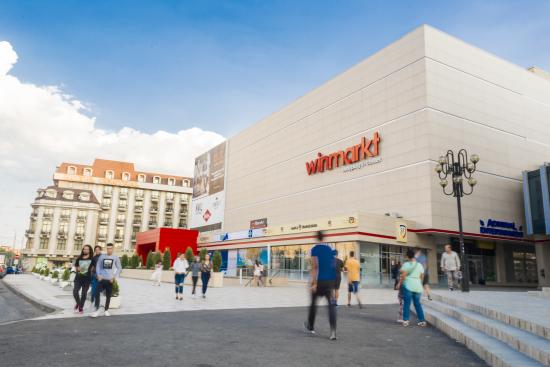The core Italian portfolio withstands even the challenges posed by high inflation

The bottom line of Gruppo IGD’s income statement for FY 2022 was impacted significantly by the €53 million decrease in fair value L4L which was reported in the year-end independent appraisals, as well as capex of around €93 million.
What were the exogenous factors and those tied specifically to IGD’s operating performance that affected the appraisals at 31 December 2022? Which asset classes suffered the most? How has the competitive environment changed in the last year with respect to the construction of new rental properties and the sale of existing real estate?
Let’s take a closer look at these and other issues affecting the valuations of the property portfolio by asking Roberto Zoia, IGD SIIQ SPA’s Director of Asset Management, Development and Network Management, a few questions.
Can we get a better understanding of the context in which the valuations of IGD’s portfolio matured at year-end 2022?
In 2022, the delicate geopolitical situation that developed due to the Russian-Ukrainian conflict and the closing of China because of the zero-Covid policy, resulted in global market conditions which were not easy for retail real estate businesses. The inflation that exploded, with a sharp increase in energy costs, impacted household’s spending capacity and increased the electricity and heating costs for shopping centers. The monetary policy adopted by the ECB to fight inflation also affected the yield curve. In the fourth quarter of 2022 there was a slowdown in GDP growth after seven consecutive quarters of recovery.
How was this reflected in the valuations of IGD’s real estate assets?
In an environment of rapid change which was profoundly different than in 2021, the market value of Gruppo IGD’s real estate portfolio at 31 December 2022 was 2.79% lower than at year-end 2021, coming in at €2,080.86 million. The valuations were made using the discounted cash flow method which reflects the positive impact that inflation indexing had on rents which was offset by the increased discount rates. The strong uncertainty characterizing the reporting period also caused the appraisers to use a higher cap rate. The combination of these three factors resulted in a decrease which was widely expected and foreseeable beginning in September 2022.
Were there significant differences between the different asset classes?
Undoubtedly, yes. If we look closer we can see that the asset class that suffered the most, on a percentage basis, was the Officine Storiche portion of the Porta a Mare project in Livorno where the ERV used, the higher construction costs and investments made in fit outs to attract important tenants, had a strong impact. The decreases for the rest of the trading portfolio were marginal and due to higher interest rates. It should be noted, however, that the sale of the residential units in the Officine section (17 closings in 2022) were made at prices which were slightly higher than the figures used in the 2021 appraisals.
Were other portfolio assets subject to above average decreases in their valuations?
The other part of the portfolio which suffered from a sizeable decrease was Winmarkt. In this instance there was a decline of 5.5% YOY: the value of the Romanian assets fell by €7.5 million to €128.3 million, attributable mainly to malls. In this instance, also, the discount rate was higher due to higher inflation. The lower net exit value inevitably impacted the assets’ value. In absolute terms, however, the component that contributed the most to the portfolio’s overall decline was the Italian income producing property which was €38.5 million lower than in 2021, even if in percentage terms the drop is limited (2.0%).
If we look closer at this slice of the portfolio, which factors emerge?
At year-end 2021 the Italian income producing property was valued at €1,926.28 million, of which €1,481.64 million malls. The malls fell by 1.0%, which accounts for €15.1 million of the overall decline, considering also that the mall GLA was higher due to the remodeling of the Sicilian hypermarkets. The remainder was, in fact, attributable largely to the hypermarket valuations which had a fair value of €423.83 million at year-end 2021 versus less than €22.7 million at the end of 2022. Net the remodeling done at the Sicilian centers in Palermo and Catania, which resulted in a reduction of around 11 thousand square meters in the space used for the food anchors, the drop in fair value of the rest of the hypermarkets was, in fact, quite low at around 0.2%.
So, is it safe to say that the decreased valuation of the Italian income producing property is linked entirely to specific circumstances and does not reflect generalized problem areas?
I would say that that is the case. Basically, the value of the Italian income producing property was confirmed, albeit with a decrease which is consistent with the global market conditions we looked at before.
What were the issues that impacted real estate transactions in 2022?
The Commercial Real Estate transactions closed in Italy totaled €11.7 billion: 12% higher than in 2021, based on CBRE’s figures. Retail accounted for just under 9% of the total, while office segment acquisitions were the highest at 40%, followed by logistics at 23%.
How were retail real estate transactions compared to 2021?
The amount transacted fell by 32%, coming in at €1,025 million versus €1,480 million in 2021. The investments were made primarily in high-street assets. The number of transactions in the shopping center segment was limited, for modest amounts and in secondary locations. In reality both footfalls and retailers’ sale increased in 2022, after two years which were impacted significantly by the pandemic. Overall, I think a wait and see attitude with respect to any further confirmation of the model’s stability will prevail in 2022 and in 2023.
In 2022 what was the sector backdrop in Romania?
The market was less dynamic last year: 11 new shopping centers were opened. The GLA of the retail segment at year-end largely exceeded 4 million square meters, concentrated mainly in the capital, Bucharest (around 30% of the total). In Romania the preferred format is still malls which represent 62% of the total GLA, even if retail parks (which account for the remaining 38%) have expanded the most in recent years. The development of the retail sector will continue in 2023: an additional 265 square meters in new commercial GLA is expected to be delivered by year-end. The dynamics of existing stock were also very positive in 2022: the vacancy rate is very low, while retailers’ sales were higher than the 2019 pre-Covid levels.
In 2023 the priorities on IGD’s agenda include disposals in order to lower the Loan-to-Value. What assets are you looking at and how are you approaching the disposal process in light of the current environment?
The disposals that we are planning were identified clearly in the 2022-2024 Business Plan presented in December 2021 and amount to, over the three-year period, to between €180 and €200 million. These are assets that are not part of the core Italian portfolio: we are, therefore, considering Winmarkt, as well as three stand-alone hypermarkets in Italy and three plots of developable land that are part of the Porta a Mare project in Livorno. The Romanian market is not easy, as new lettable properties keep coming to market as development projects end. The Winmarkt chain, comprised of multi-level, vertical department stores in the historic centers of different Romanian cities, but not in Bucharest, is unique to the Romanian market as development typically involves large semi-peripheral shopping centers in the country’s capital. As for the other properties that we might dispose of in Italy, we need to bear in mind that in 2022 acquisitions were sluggish and the cost of financing, for those making debt financed acquisitions, is much higher than contemplated in our Plan. We will, therefore, have to work hard to extract the most value possible from these sales, without excluding the possibility of finding other assets to sell in the future.
Share




